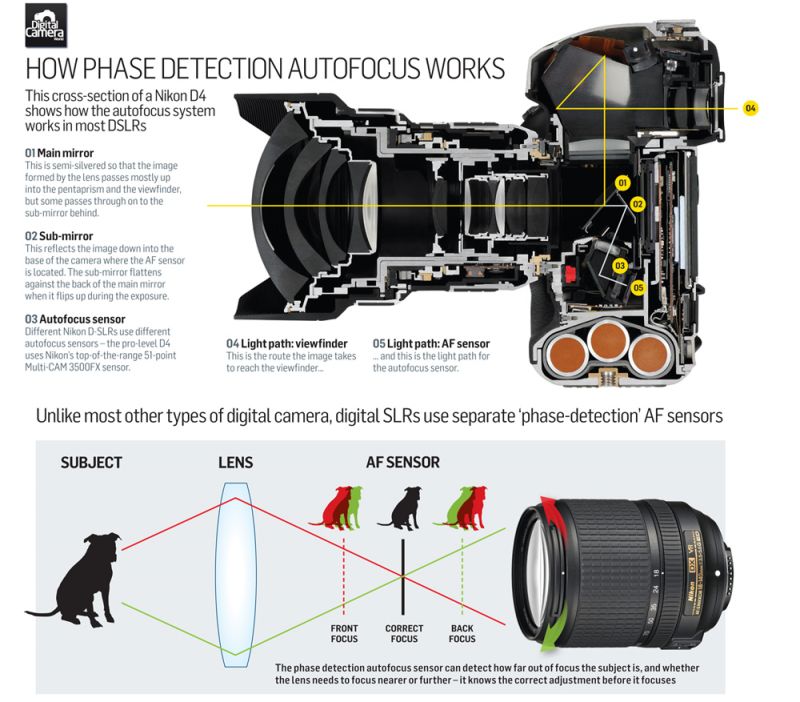Learning by observing: Understand how focus function on camera works by observing a picture
2018.06.06

“Focusing is one of the most important function of a camera. Speed and accuracy of focus is also a factor to consider when purchasing a camera. This article will use a side view of Nikon D4 to observe how DSLR camera’s autofocus function works, and what are the methods to autofocus. ”
In this digital era, autofocus is the most basic function, right? Moreover, the manufacturers also regard this as one of the important points in battlefields, and the focusing speed has become a measurement of strength. But do you know how autofocus is performed?
(1) Phase Detection In simple terms, the camera separates the light and compares the pair of lights through the AF sensor to determine whether the focus position has moved forward or backward, thereby controlling the adjustment of focus ring. This method is accurate and fast, but it requires a lot of accessories, commonly used in DSLR, but some non-reverse cameras such as Nikon 1 use phase detection focusing too.
(2) Contrast Detection This is done directly on the light sensor through the lens. The principle are that the image in focus tends to have the highest contrast, that is, there will be the most distance differences between adjacent pixels, so the lens will be adjusted until it reaches the highest contrast value. The problem is that this method will not know if the focus itself is moving forward or backward, so the focusing speed is slower. During the time of lack of light, it is more difficult to autofocus. However, the benefit is that it does not need the use of additional components. Therefore, they are often used for portable devices, non-retroactive cameras, etc. Some DSLRs also use contrast detection focus (or hybrid method) in the Live View mode.
(3) Others Although the above two are the mainstream methods (including hybrid method), various manufacturers continue to try new focusing technologies, such as the earlier Canon 70D launched a new technology called “Dual Pixel”. The main principle is each pixel on the sensor can absorb light and perform phase-difference detection for autofocus.
Besides that, there is also “active focus”, which is focusing on emitting infrared rays, ultrasonic waves, or lasers. It is quite different from the above-mentioned passive absorption of light, but it is rarely seen in ordinary digital cameras.
But of course, science and technology are constantly improving. The above-mentioned principles and shortcomings are believed to be quickly improved by manufacturers in various ways. These data can serve as a basic reference so that we can witness the changes in the times. If readers already get updated information on technological development, they are welcome to share it with us.
If you are interested in our articles, you can also LIKE our page:)
相關文章
-
Camera for girls, consideration of appearance and right tech on the inside
-
Things to know before buying a camera: 8 things to be get ready before purchasing
-
Dedicated to new photography fans, six thoughts on purchasing Speedlights
-
Get acquainted with the perspective compression of long-focus lens
-
Understand the DOF scales and hyperfocal distance, manual focus will be made simple.
-
Introduction to the classifications of Nikon manual focus lens
